The Top 20 NBA Draft Prospects in the Pac-12 Conference
Top NBA Prospects in the Big 12, Part 1
(#1) Kelly Oubre (Scouting Video)
Top NBA Prospects in the Big 12, Part 2
(#2) Cliff Alexander (Scouting Video)
Top NBA Prospects in the Big 12, Part 3
(#3) Myles Turner (Scouting Video)
Top NBA Prospects in the Big 12, Part 4
(#4) Wayne Selden (Scouting Video)
Top NBA Prospects in the Big 12, Part 5
(#5) Juwan Staten
(#6) Perry Ellis
(#7) Georges Niang
(#8) LeBryan Nash
Top NBA Prospects in the Big 12, Part 6
(#9) Cameron Ridley
(#10) Marcus Foster
(#11) Isaiah Taylor
(#12) Buddy Hield
Top NBA Prospects in the Big 12, Part 7
(#13) Jonathan Holmes
(#14) Devin Williams
(#15) Ricardo Gathers
(#16) Monte Morris
#17, Wesley Iwundu, 6-7, Sophomore, Small Forward, Kansas State
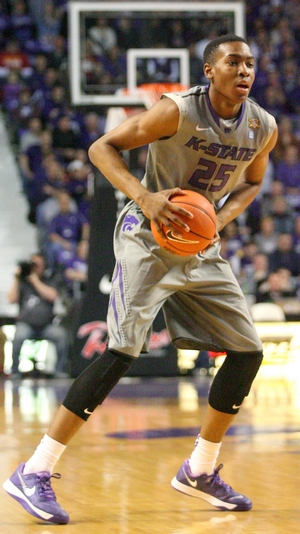
Jonathan Givony
A completely unheralded recruit according to the high school scouting services, Wesley Iwundu nevertheless emerged as a valuable contributor for Kansas State as a freshman, starting 32 of 33 games and playing 24 minutes per contest.
Iwundu stands out as a prospect primarily due to his physical attributes, as he has excellent size for a small forward at 6-7 to go along with a long wingspan and a nice frame that should fill out well in time. He's a very good athlete on top of that, showing solid quickness, good fluidity, and the ability to get off his feet quickly to attack the rim ferociously with a strong vertical leap.
Iwundu is a fairly limited offensive player at this point in time, seeing most of his possessions playing off the ball for Kansas State as somewhat of a hybrid combo forward charged with running the floor in transition, moving off the ball, crashing the offensive glass, and shooting the occasional jump-shot. He scored a relatively paltry 11 points per-40 minutes, and not on amazing efficiency, but shows some nice sparks of potential at times thanks to his terrific physical profile, soft touch, and solid basketball IQ.
His quick first step allows him to attack the basket in a straight line when given an open lane, where he can finish with authority or draw fouls at a solid rate, but his rudimentary ball-handling skills limit him significantly as a shot-creator in the half-court. His pull-up jump-shot is rather crude as well, as he made just 4 of his 18 attempts of this nature as a freshman and 63% of his free throw attempts. He doesn't force the issue, though, as he appears to be a willing passer with a solid feel for the game.
Iwundu's jump-shot shows potential with his feet set, as he knocked down a handful of catch and shoot jumpers last season in Big-12 play, displaying decent mechanics and nice shooting touch. He's still working on becoming more consistent in this area, though, as his release is somewhat on the slow side and he's prone to shooting on the way down at times when rushed. He obviously has a ways to go in this area, but shows just enough potential here to lead you to believe he can develop this part of his game in time, something that will play a significant role in how he's perceived as a NBA prospect down the line.
Iwundu's calling card at the moment revolves around his play on the defensive end, where he's already fairly effective and shows excellent potential to continue to improve. His excellent size, length, mobility and timing allows him to guard multiple positions, as he moves his feet well, does a great job staying in front of opponents and contests shots impressively on the perimeter. Iwundu needs to get stronger and gain more experience, as he can get taken advantage of at times by older players, but he has all the makings of a very solid and versatile piece on this end of the floor.
It's a bit early at this stage to be making too many observations about Iwundu's long-term potential as a NBA prospect, as he's still making the transition to being a full-time wing player and has a skill-level that is very much a work in progress. With that said, he has some very interesting characteristics that bode well for his future, so it will be interesting to see how he continues to improve as a sophomore and beyond.
#18, Kyan Anderson, 6-0, Senior, PG, TCU
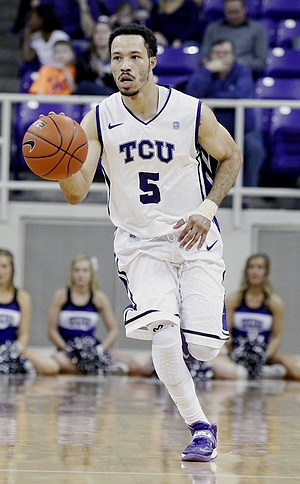
Josh Riddell
TCU has not had much basketball success after their transfer to the Big XII conference, winning just two league games in 2012-13 and having a disastrous winless conference season last year. After starting his career in the Mountain West conference, where he was named MWC Freshman of the Year, Kyan Anderson has had plenty of individual success in the Big XII, culminating in being named to the All-Conference Honorable Mention team last season, but it has not resulted in much success at the team level, something he'll certainly be looking to change as a senior.
Anderson is one of the most productive returning collegiate players around, as he averaged 19.5 points, 2.8 rebounds and 5.0 assists per 40 minutes pace adjusted, on strong efficiency marks, posting an excellent 61% true shooting percentage. As he enters his senior season, Anderson will need to have another productive campaign for TCU to not get rolled over again in the Big 12, while trying to show that he still has room to improve and translate his terrific productivity to the NBA level.
Anderson has several ways to put the ball in the basket at the collegiate level as he showed by being one of the most prolific and efficient scorers in the Big 12 last year. One of his most translatable skills is his ability to make outside shots, as he hit an excellent 40% of his three pointers last season on 106 attempts. He is a solid jump shooter overall, as he made 41.3% of his overall jump shots and showed comfort both in catch and shoot situations, where he shot 36.4% on 66 attempts and shots off the dribble, where he made an outstanding 47.7% of his 65 attempts. Anderson is forced to take a lot of very difficult shots handling the ball for a stagnant offense as the shot-clock runs down, and he's able to make these at a much higher rate than you'd expect.
Anderson has terrific ability to stop on a dime and pull-up off the dribble with a quick release and good elevation, showing he might be able to have some success getting his shot off comfortably against taller guards. Anyone that can create space and knock down shots the way he can, while being a primary ball-handler, will get a long look from NBA teams, as there simply aren't enough players like him coming out of the college ranks each year.
Physically, Anderson may have some trouble holding his own against NBA guards, as he is currently listed at 6'0, 175 pounds. None of his physical tools are especially impressive, as he does not possess elite strength or length to make up for his small size. With that said, Anderson has nice quickness and a solid vertical leap, which helps compensate for his average size.
Anderson is improved greatly as a finisher at the rim as a junior, shown in his 57.9% field goal percentage at the rim according to Synergy Sports Technology, although he did so on just 57 attempts. This is a step up from his sophomore campaign, where he shot only 47% on 34 attempts according to Synergy Sports Technology. He also more than doubled his free throw rate, earning 7 per-40 minutes pace adjusted, up from just 3.3 the year before.
A strong ball-handler, Anderson shows a nice extra gear he can go to to keep defenders off-balance, giving him just enough of a cushion to get to the rim and either find the open man or draw a foul. He's got solid body control and the ability to play at different speeds, which helps him score as efficiently as he did last season despite being surrounded by some very average offensive talent by Big 12 standards.
While he has success breaking down people off the dribble and getting to the rim, some of his success can be attributed to the fact that he's very selective with his forays to the rim, only attacking the basket when there is no rim protection available. When there is a shotblocker patrolling the paint, he struggles to finish at the rim, often throwing up a wild attempt, but to his credit he knows his limitations and doesn't try to force the issue too often. There are some question marks he'll have to answer about how he'll fare against bigger and more talented athletes at the next level, though, primarily due to his size.
Anderson has nice vision and can find the open teammate, averaging 5.0 assists per 40 minutes pace adjusted last season, which is around average compared to other point guards. He delivers crisp, creative, accurate passes and finds a very nice balance between being a playmaker and scorer, leading you to wonder how much better he might look if he was surrounded by more talent.
Anderson committed 3.4 turnovers per 40 minutes pace adjusted, which is on the high side but is also a product of having the ball in his hands all the time and being asked to create the majority of the TCU offense. NBA teams will want to see how Anderson can handle running a team while balancing his role as being the primary scorer.
Anderson's biggest hurdle from an NBA standpoint might revolve around his play on the defensive end. He struggles to guard collegiate players at this size, and his collection of physical tools suggest he will have similar issues against NBA players. A similar issue with many point guard prospects this year, he blocked just one shot last season. He isn't quick enough to keep up with ball handlers and has trouble contesting jump shots on the perimeter due to his lack of length.
In his senior season, Anderson will look to lead the young TCU team to a more successful Big XII conference season. Anderson has a well-rounded offensive skill set, showcasing a variety of ways to score from multiple places on the court. From a draft perspective, Anderson doesn't have the highest ceiling due to his age and average height, but he has a few things going for him with his ability to score efficiently from all over the floor and also make plays for others. Due to his difficult situation at TCU, he'll probably need to show well in pre-draft settings, starting at the Portsmouth Invitational Tournament, to show that he can translate his individual success on a losing team to better competition. However, another productive season from the point guard spot for TCU, possibly helping his team be more competitive the Big 12, could certainly improve his NBA standing.
#19, Dustin Hogue, Senior, Small Forward, Iowa State
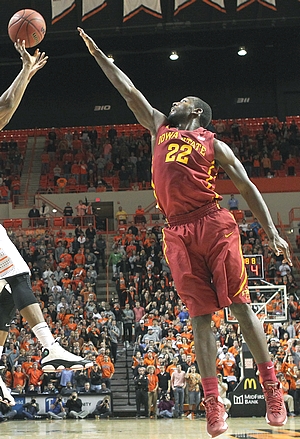
Kyle Nelson
After spending two years at Indian Hills Community College, Dustin Hogue transferred to Iowa State where he was expected to provide toughness and versatility in Iowa State's multifaceted and talented frontcourt. Rather than fading into the background, Hogue ended up playing an essential role during Iowa State's run to the Sweet 16, where he averaged 17.7 points and 7.3 rebounds, including 34 points against eventual national champion Connecticut. With Melvin Ejim and DeAndre Kane lost to graduation, Hogue will have to rise to the challenge of not only providing Iowa State with his reputed toughness, but also shouldering a larger load within the Cyclones' offense.
At 6'6 with a strong 220-pound frame and a solid wingspan, Hogue looks the part of an NBA wing. He is a good athlete, as well, quick and explosive while being aggressive enough to maximize his physical tools on every possession. That being said and while Hogue looks like a wing, he spent most of his time at power forward or center, and he simply is too small to man the post at the next level, no matter how aggressively he plays.
Though he averaged an underwhelming 14.1 points per 40 minutes pace adjusted, he was incredibly efficient to the tune of 64.6% 2P%, while displaying proficiency operating in a variety of situations on the offensive end of the floor.
On the offensive end of the floor, Hogue exhibits a quintessential tweener's game. Perhaps most notable is Hogue's ability to move without the ball. He proved himself to be an expert at cutting to the basket, attacking the offensive boards, and running in transition, all of which allowed him to find easy looks around the basket without being featured that often in Iowa State's offense. Hogue saw a small part of Iowa State's possessions, but nonetheless managed to assert himself through sheer effort, awareness, and athleticism to find his own offense.
Also impressive is Hogue's ability to fight for looks in the paint. Despite standing just 6'6, Hogue is not afraid to back his man down, utilizing both his toughness and quickness to take the ball to the basket. Additionally, he has excellent body control and has a knack for exploiting defensive lapses to score in a variety of unorthodox ways off of the block.
Though his efforts in the post are admirable, Hogue projects as a small forward at the next level and the question remains as to how prepared he is to fulfill such a role. Two important indicators are his shooting mechanics and his ball-handling ability.
On film, it is easy to tell that Hogue isn't a natural shooter. Despite that, he was able to be relatively productive when in rhythm, and excels in catch-and-shoot situations to the tune of 38.1%. When he has less time or has to initiate his shooting motion by himself, he is far less effective and his mechanics reflect as much, as he tends to fade away from the basket and his release loses its fluidity. It's worth noting that he attempted only 64 perimeter jump shots, and he may continue to improve if he can turn his perimeter jumper into a more prominent aspect of his game. As of now, however, his solid, but unspectacular 34.4% 3FG and 66.4% FT indicate that he has a ways to go in this area.
Even less developed is his ball handling ability. Hogue's slashing game is average at best, limited at the moment to straight line drives at the basket. Additionally, he has very little mid-range game, which points to how raw he is technically amidst the flashes of potential that were so intriguing in March.
On the defensive end, Hogue's prospects are similarly mixed. There is one very obvious explanation, insofar as he is 6'6 and 220-pounds and guarding power forwards and centers. More troubling is the fact that he tends to give shooters too much room and, far too often, he gives up early on plays, even if he has managed to stay with his man throughout. Hogue displays very good lateral quickness and timing, but lacks the fundamentals to really shine on the defensive area of the floor. Scouts will be watching to see if he can take the next step, from intriguing physical specimen to standout defensive player during his senior year.
One area where Hogue does shine, however, is on the boards. A testament to his athleticism and aggressiveness, he grabbed an impressive 10.2 rebounds per 40 minutes pace adjusted, a number that situates him in the top-10 among small forwards and in the upper half of post prospects in our database.
At the end of the day, Hogue's NBA prospects are very much to be determined. Like Iowa State combo forwards Melvin Ejim and Marquis Gilstrap before him, Hogue enters his senior year caught between positions with intriguing athleticism and offensive potential but a rudimentary perimeter game and being a little bit old for his class. Neither of Ejim nor Gilstrap was able to convince NBA scouts that they were capable of playing small forward in the NBA, but Hogue has momentum on his side after his stunning offensive display at Madison Square Garden in March. Building on his junior season, particularly as a perimeter shooter and on the defensive end of the floor, will go a long way in addressing doubts about his ability to play on the wing in the NBA. If he is able to convince scouts that his late season heroics were not a flash in the pan, then Hogue could see his stock rise dramatically during his senior season.
#20, Bryce Dejean-Jones, 6-5, Senior, SG, Iowa State
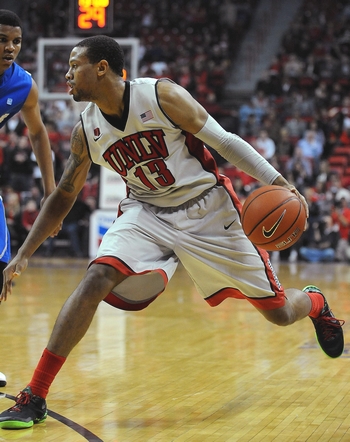
Josh Riddell
After playing his freshman season at USC before moving on and playing two seasons at UNLV, Bryce Dejean-Jones ends his collegiate career at his third and last stop, as a graduate transfer at Iowa State. Dejean-Jones will pair with returning player Georges Niang and hope to lead the Cyclones back to the NCAA tournament in the same way graduate transfer DeAndre Kane did in 2013-14.
Dejean-Jones did not end his redshirt junior season on a high note, as he was suspended for the last regular season game before deciding to move on from UNLV at the end of the season. Iowa State will be the third college he has attended and some NBA teams may have concerns about that. He can put many of these to rest with a strong senior campaign but will need to demonstrate he has matured in the off-season.
At 6'5, 210 pounds, Dejean-Jones has nice size for a shooting guard but is still a little slim compared to NBA players. He has some room to add muscle to his frame and some added strength will help him on both ends of the floor. Dejean-Jones has a nice first step and long strides which make him a capable slasher as he can get past his defenders off the dribble.
Dejean-Jones' combination of physical tools make him a capable dribble penetrator, but he is mainly a straight-line driver as he relies on his first step to beat his defender to drive right at the rim. He is comfortable with the ball in his hands and can slash to the rim, where he scores 52.8% of his attempts, according to Synergy Sports Technology. Throughout Dejean-Jones' career he has been known as a notorious ball-stopper and over-dribbler, trying to force dribble penetration when it is not available. He likely won't be a first option in a NBA unit, so he will need to find other ways to contribute on the offensive end.
Dejean-Jones' excessive ball-handling does help him get his teammates involved though, as both his 4.3 assists per 40 minutes and 1.03 pure point rating ranked as one of the highest among shooting guards last season. Dejean-Jones is a capable passer when he wants to be, but needs to improve his ball movement and decision making on dribble penetration to become a more efficient offensive player.
One aspect that is holding Dejean-Jones back is his inability to consistently hit jump shots. He made 34.7% on 121 three point attempts in 2012-13 but regressed a bit in 2013-14, making just 32.3% on 96 attempts. He has strong fundamentals on his jump shot and a high release point to prevent his shot from being blocked. Poor shot-selection is what seems to be holding Dejean-Jones back more-so than a lack of shot-making ability. Getting back to being a consistent and efficient jump shooter in his senior season in Fred Hoiberg's up-tempo offense will be a big boost for Dejean-Jones' draft potential.
Dejean-Jones has some potential as a defensive player due to his combination of size and length, but his long arms are often at his side, mitigating their usefulness. He also has the tendency to drift defensively, standing straight up or losing track of his opponent, allowing the offensive team easy looks at the basket. Showing a more focused commitment on the defensive end while using his length to force turnovers will be a nice addition to his skill set.
Although he will be entering a graduate transfer year, Dejean-Jones will be just 22 at draft time next year, the same age as many other collegiate seniors. Dejean-Jones should get plenty of open looks on the perimeter playing alongside Georges Niang, who should command attention from the defense, giving Dejean-Jones the opportunity to showcase any improvement on his jump shot. At this point, any draft potential for Dejean-Jones depends on his ability to consistently show he can make good decisions with the ball and hit outside shots at a strong rate, making him a viable off ball floor spacer. If he does that while staying out of trouble in his graduate transfer year at Iowa State, NBA teams will at least be able to envision what kind of role he would be able to play at the next level.













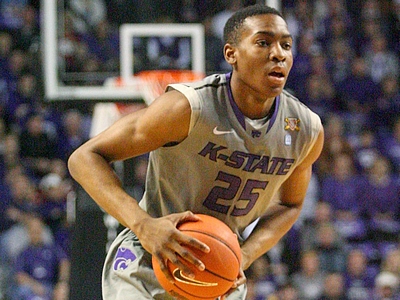








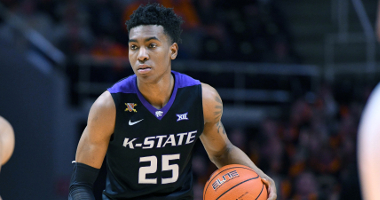










Comments